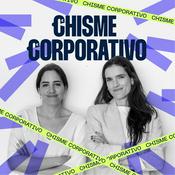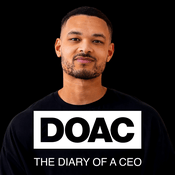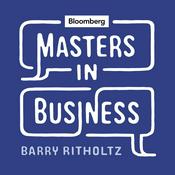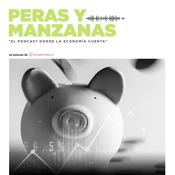(don't) Waste Water! | Water Tech to Solve the World
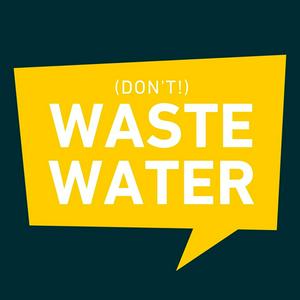
488 episodios

The Future of Water Tech VC: Why Specialists Are Finally Emerging.
17/12/2025 | 59 min
How is Cycle H2O (a new Water VC) De-Risking Early Stage Water Tech Investment?More #water insights? Get my free mapping of 267 water investors here: https://investors.dww.show🙌 Supporters 🙌 A big thank you to my partner SimpleLab: https://link.dww.show/simplelabCycle H2O is a Canadian water-focused venture capital fund investing $500K-$2M checks in early-stage water technology companies. The fund targets 12 portfolio companies across industrial, municipal, and agricultural water sectors with $30 million ready to deploy.Simon Olivier is a senior partner at Cycle Capital and head of the Cycle H2O Water Fund, bringing 30 years of corporate experience, including building GE's renewable energy business from the ground up, acquiring Enron's wind assets in 2001, and now applying energy sector investment lessons to water tech & the water VC field.🌶️ KEY SPICES 🌶️🔬 Three-headed de-risking structure: Cycle Capital brings VC management expertise, H2O Innovation provides market intelligence across 75 countries, and the fund team delivers strategic guidance as a "copilot investor"⚡ Energy-to-water playbook: 30 years of renewable energy experience reveals water tech is following the same arc—but with higher stakes since water has no substitute💼 Business continuity focus: Invests in B2B solutions where industrial users pay for water efficiency because it directly impacts their bottom line, not just compliance🎯 Exit-first valuation: Maps potential exits before cutting checks to avoid down rounds—seeking the "Goldilocks valuation" where both founder and investor stretch🌍 Impact without compromise: Treats environmental and financial returns as inseparable, positioning water as a strategic business asset rather than a feel-good cause🥜 IN A NUTSHELL 🥜Why focus on early-stage water tech? The greatest impact and value creation happens early, but the risk is high—hence the unique fund structure with strategic partners who provide due diligence support and accelerate time-to-market for portfolio companies.How do you compress the industry's notorious 12-16 year adoption cycle? By investing in companies addressing urgent market fundamentals like the Legionella detection company Bio Alert, and leveraging H2O Innovation's global network to fast-track pilots and distribution partnerships.What makes a quick "no" for investment? Missing barriers to entry like IP, undifferentiated "me-too" products, no clear roadmap to monetization, or incomplete founding teams—though exceptional strength in one area can offset weakness in another.Why avoid policy-dependent business models? Regulations change overnight; instead, the water VC targets industrial users where water efficiency drives business survival, making adoption a financial imperative rather than a compliance checkbox.What returns can water tech deliver? The fund targets 10x returns as achievable across the portfolio, expects two to three zeros from twelve investments, and bets that rising water scarcity will drive up valuations as water becomes properly priced as a finite resource.#️⃣ All the Links Mentioned in this Video #️⃣https://cyclecapital.com/en/cycleh2o/https://www.linkedin.com/in/simon-olivier-p-eng-mba-3560b04/Hosted on Ausha. See ausha.co/privacy-policy for more information.

Would You Gift Sewage for Christmas?
03/12/2025 | 33 min
What Wastewater Products Can You Actually Buy for Christmas? 🙌 Supporters 🙌 A big thank you to my partner SimpleLab: https://link.dww.show/simplelab My best water tech analysis straight to your inbox: https://www.linkedin.com/build-relation/newsletter-follow?entityUrn=6884833968848474112 ⬇️ IN THIS VIDEO ⬇️ This special episode showcases 17 commercially available products made from recycled wastewater, desalination brine, and industrial water byproducts. From ski resort snow to table salt, beer to bourbon, cosmetics to clothing, these items prove that circular water economy isn't just theory—it's hitting store shelves as legitimate luxury goods and everyday essentials. 🌶️ KEY SPICES 🌶️ 🎿 Big Sky Resort now makes artificial snow from recycled village wastewater using Montana's largest zero liquid discharge system 🧂 Desalination brine transforms into gourmet table salts and superfood ingredients instead of marine discharge 🍺 Reused wastewater beer, rainwater whisky, and coffee-waste vodka prove beverage innovation is real 👖 Jeans from Everlane and Triarchy achieve 95-98% water recycling through closed-loop finishing 🧴 L'Oreal's Burgos "waterloop factory" reuses 100% of process water for Kerastase production 🧪 Hungarian startup Cycle ferments sewage sludge into bio-acid cleaners shipped worldwide 🥜 IN A NUTSHELL 🥜 Can you really eat products from desalination waste? Aqualia's Alma de Mar table salts and UAE-grown Salicornia demonstrate that brine valorization creates food-safe, even gourmet products through controlled crystallization and aquaponic farming. How are beverage companies using wastewater? H2O Innovation, Epic Cleantec, and Singapore's NEWBrew produce beers from purified wastewater, while Good Vodka upcycles 15 million tons of annual coffee cherry waste and Old Humble proofs whisky with collected Texas rainwater. What makes water-smart clothing different? Everlane's Saitex partnership recycles 98% of process water, Triarchy replaces chemical bleaching with ozone, and Girlfriend Collective turns plastic bottles into sportswear while capturing microplastics. Which home products close the water loop? Porcelanosa ceramics operates zero liquid discharge, EnviroCopy paper circulates water 30 times per production cycle, and Vuna's Aurin turns urine into nitrogen fertilizer now scaling across Europe. ⏰ TIME STAMPS ⏰ 00:00 17 Wastewater Products 00:17 Big Sky Montana 04:31 Alma de Mar 06:12 Salicornia 07:49 Tasting 09:34 They almost made it... 10:31 H2O Innovation Pale Ale 12:43 Good Vodka 14:24 Old Humble Special Reserve 16:16 Naif Face Scrub 18:27 Kerastase by l'Oreal 20:09 Everlane Jeans 22:29 Triarchy Jeans 23:38 Girlfriend Collective Tank Top 25:07 Himba Fish Cuff 25:32 Innorecycling Water Can 25:59 Aurin by Vuna 27:31 Porcelanosa Tiles 28:56 Sustana Enviro Copy 30:15 Cycle Biocleaners 32:02 Test Results 33:03 An Epic Surprise...Hosted on Ausha. See ausha.co/privacy-policy for more information.

Ovivo's Bold Vision: Back to Full Size in One Decade!
26/11/2025 | 1 h 3 min
How Will Ovivo Rebuild to Full Size in 10 Years After the Ecolab Deal?🙌 Supporters 🙌 A big thank you to my partner SimpleLab: https://link.dww.show/simplelab ⬇️ IN THIS EPISODE ⬇️Ovivo is a global water treatment technology provider entering a transformative new chapter after spinning off its electronics division to Ecolab for $1.8 billion. Under Ski on Water's ownership, Ovivo is now positioning itself for aggressive growth through industrial expansion, silicon carbide membrane innovation, and PFAS destruction capabilities across North America and Europe.This episode features Reinhard Hubner, CEO of SKion Water with years of water industry M&A experience; Elena Bailey, Director at Ovivo North America with decades of experience in water technology who joined through an acquisition in 2006; Mike Snodgrass, membrane technology specialist with 25+ years experience including hands-on polymeric membrane development; and Sebastian Andreassen, co-founder and leader of Ovivo's Cembrane silicon carbide membrane manufacturing operations with facilities in Denmark and Texas.🌶️ KEY SPICES 🌶️🔬 Silicon carbide membranes deliver breakthrough flux rates at low pressure with hydrophilic, chemically inert properties that outperform polymeric alternatives💧 Double-digit percentage R&D investment funds innovation without a centralized research department—product managers drive patented solutions🏭 European industrial expertise from a decade of experience in operations transfers directly to North American expansion through people-first integration⚗️ PFAS destruction technology from E2Metrix leverages existing municipal customer relationships for rapid market entry🤝 Long-term ownership culture keeps acquired company founders engaged for 7-9+ years post-acquisition🥜 IN A NUTSHELL 🥜What is the 10-year vision for Ovivo? SKion Water plans to rebuild Ovivo to its pre-transaction size through industrial platform acquisitions in North America, silicon carbide membrane scaling, and PFAS treatment commercialization.Why focus on industrial water treatment? Municipal operations run independently with proven teams, while industrial requires European expertise transfer and platform acquisitions to replicate the 350 million euro success achieved through EnviroChemie.How does Cembrane's silicon carbide differentiate? Unlike polymeric membranes, silicon carbide is hydrophilic, extremely porous, and chemically inert—enabling applications in drinking water, sand filter replacement, and backwash recovery that competitors cannot match.What are the capacity expansion plans? Cembrane's manufacturing will increase 50% in 2026 and double by 2027, with Texas production providing tariff protection and BABA compliance for North American municipal projects.Where does PFAS fit the strategy? E2Metrix destruction technology pairs with existing SSE membrane installations at water plants, creating bundled solutions that leverage Ovivo's installed base relationships with municipal customers.#️⃣ Mentioned Links #️⃣Ovivo's website: https://www.ovivowater.com/en/My WEFTEC coverage: https://www.youtube.com/watch?v=ZAb9bDjpOsEHosted on Ausha. See ausha.co/privacy-policy for more information.

What Happens When You Build a Water Membranes Factory Just to Prove a Point?
20/11/2025 | 28 min
How Is Aqua Membranes Scaling 3D-Printed Water Membranes Spacers from Garage Startup to 200,000 Square Foot Manufacturing Facility? Let's find out!More #water insights? Connect with me on Linkedin: https://www.linkedin.com/in/antoinewalter1/🙌 Supporters 🙌 A big thank you to my partner SimpleLab: https://link.dww.show/simplelab⬇️ IN THIS VIDEO ⬇️Aqua Membranes manufactures reverse osmosis membrane elements with 3D-printed spacers that reduce energy consumption and pressure drops in industrial water treatment across mining, semiconductor, and beverage sectors. Founded 15 years ago by Rodney Herrington in his garage, the water membranes company now operates from Albuquerque and a new 200,000-square-foot Knoxville facility led by CEO Craig Beckman and CTO CJ Kurth.🌶️ KEY SPICES 🌶️🖨️ Proprietary 3D printing technology creates Fibonacci spiral-patterned spacers that optimize fluid flow and reduce fouling compared to traditional mesh spacers found in water membranes⚡ Energy efficiency gains through reduced pressure drops enable customers to lower operating costs and extend cleaning cycles in reverse osmosis systems🏭 Vertical integration strategy from material science through full element manufacturing de-risks technology adoption for major water membranes manufacturers🎯 Strategic customer validation from Fortune 500 companies including Coca-Cola, Micron Technology, and exclusive distribution partnership with Osmo Flow in Australia📈 Scalable manufacturing platform with capacity for 25,000 elements annually in current configuration and 9x expansion potential in the Knoxville facility🥜 IN A NUTSHELL 🥜Why can't Aqua Membranes just license their spacer technology to major water tech manufacturers? The membrane industry requires extensive real-world validation before adopting new materials, forcing innovators to manufacture complete elements at a commercial scale before established players will consider licensing.What makes 3D-printed spacers superior to traditional mesh? The Fibonacci spiral pattern eliminates straight-line flow channels that cause fouling, while UV-cured polyacrylate provides precise control over channel geometry for customized applications.How did Aqua Membranes choose Knoxville for manufacturing expansion? After evaluating 20 U.S. and Mexican locations, they selected Knoxville for its business environment, educational resources, and capacity to support 95 jobs with multi-shift expansion potential.What role does Albuquerque play now that Knoxville is operational? Albuquerque transitions to R&D, focusing on co-creation with customers, testing new patterns and applications, including gas separation, while maintaining identical equipment to troubleshoot production issues.When will the new printing technology become available? The second-generation process moves to Knoxville in March 2025, with commercial launch targeted for late 2026, offering faster speeds, improved tolerance, and lower costs.#️⃣ Mentioned Links #️⃣Aqua MembranesOsmofloHosted on Ausha. See ausha.co/privacy-policy for more information.

The Most Ridiculous Water Technology I've Ever Analyzed (it was worth it!)
12/11/2025 | 36 min
Can Cloud Harvesting Revolutionize Water Production? A Deep Dive into AirHES Technology🙌 Supporters 🙌 A big thank you to my partner SimpleLab: https://link.dww.show/simplelab ⬇️ IN THIS EPISODE ⬇️AirHES is a proposed atmospheric water harvesting technology that uses aerial collection systems (kites or balloons) with specialized mesh to capture cloud droplets. The collected water flows down through hoses, generating both pressurized freshwater and hydropower from the natural pressure head, claiming to potentially deliver the cheapest water and electricity on Earth.This episode features my rigorous "10th man doctrine" analysis—applying contrarian due diligence to unconventional water technologies—drawing from my 15 years in the water and wastewater industry, including experience evaluating emerging technologies from desalination to atmospheric water generation.🌶️ KEY SPICES 🌶️☁️ Cloud-level water capture using proven fog collection mesh technology with documented efficiencies from existing literature💧 Dual revenue streams from both freshwater production (modeled at $0.10-0.21/m³) and hydropower generation from vertical pressure head🎯 Potential niche applications for remote, cloudy, inland communities needing 10-200 m³/day where traditional desalination faces infrastructure challenges🔬 Rigorous physics-based analysis revealing realistic costs of $0.30-0.60/m³ after accounting for downtime, maintenance, and operational constraints⚖️ Technology requires overcoming complex engineering trade-offs between pipe weight, friction losses, buoyancy, wind loading, and airspace regulatory hurdles🥜 IN A NUTSHELL 🥜Does the technology actually work? The mesh physics and fog collection principles are sound and well-documented, but cloud-level capture efficiency, uptime, and real-world performance remain unproven until multi-month instrumented pilots are conducted.What are the biggest technical challenges? Running kilometers of pressure hoses vertically requires solving complex trade-offs between pipe weight, friction losses, buoyancy, wind loading, and material costs—issues that significantly impact economic viability.Where could AirHES actually succeed? The technology shows promise for remote, persistently cloudy inland communities far from coastlines, mining camps at elevation, and island interiors where traditional reverse osmosis faces permitting barriers or extreme infrastructure costs.Is the electricity generation worthwhile? Power output represents only ~8% of revenue in AirHES's own models, with typical systems generating just 2-3 kW—barely enough to power a hair dryer—making it more of a distraction than a selling point.Why pursue weird ideas like this? Taking unconventional technologies seriously, even when flawed, expands the "adjacent possible" in water innovation, generates valuable insights, and prevents the sector from getting trapped optimizing only conventional solutions like reverse osmosis.#️⃣ Mentioned Links #️⃣AirHES Technology Packy McCormick's "Not Boring" newsletterSend me your ideas: [email protected] on Ausha. See ausha.co/privacy-policy for more information.
Más podcasts de Economía y empresa
Podcasts a la moda de Economía y empresa
Acerca de (don't) Waste Water! | Water Tech to Solve the World
Escucha (don't) Waste Water! | Water Tech to Solve the World, CREATIVO y muchos más podcasts de todo el mundo con la aplicación de radio.net

Descarga la app gratuita: radio.net
- Añadir radios y podcasts a favoritos
- Transmisión por Wi-Fi y Bluetooth
- Carplay & Android Auto compatible
- Muchas otras funciones de la app
Descarga la app gratuita: radio.net
- Añadir radios y podcasts a favoritos
- Transmisión por Wi-Fi y Bluetooth
- Carplay & Android Auto compatible
- Muchas otras funciones de la app


(don't) Waste Water! | Water Tech to Solve the World
Descarga la app,
Escucha.



